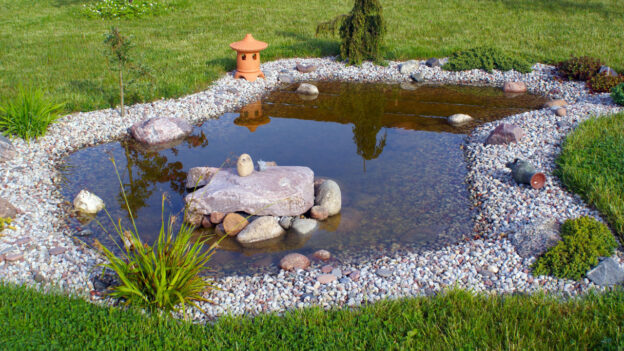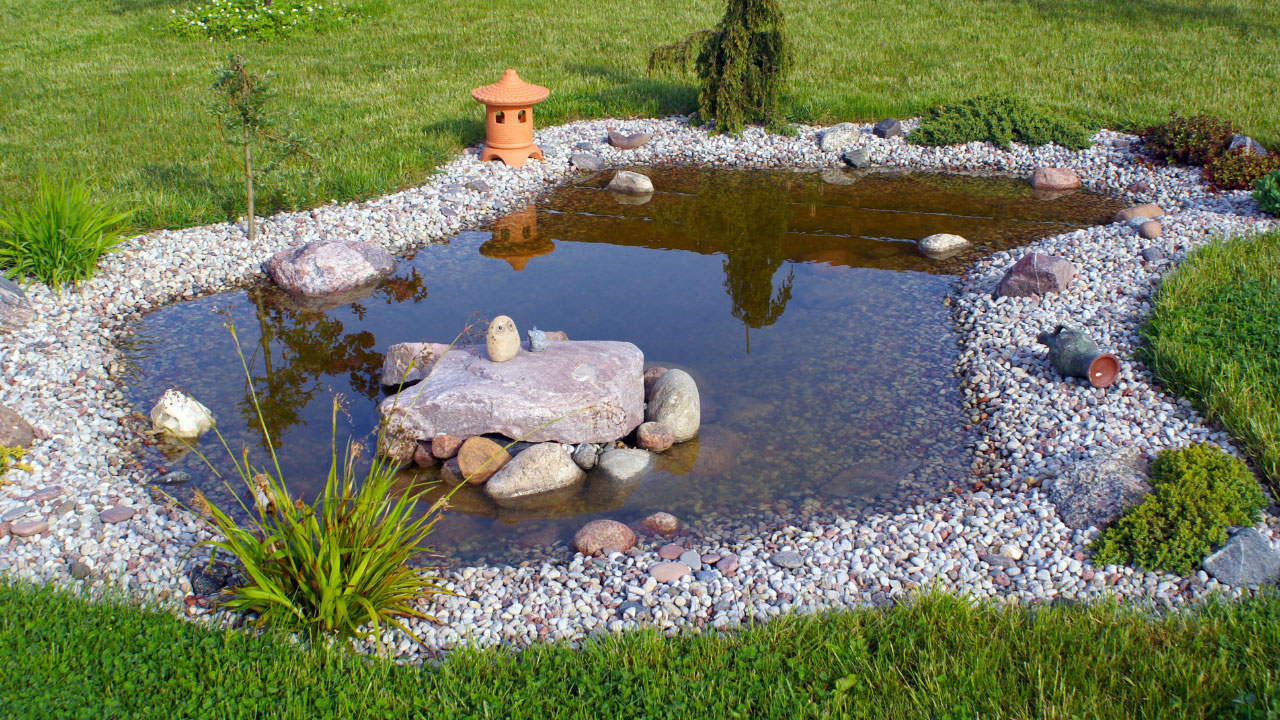Key Takeaways
- Always remove debris. Clean filters and check how the system works. This upkeep keeps the water quality good.
- Include helpful aquatic plants. They naturally absorb extra nutrients and give shade. This reduces algae growth.
- Install aeration systems. They boost oxygen in the water, which helps fish stay healthy.
- Consider professional pond maintenance services for expert care and to avoid common DIY pitfalls.
- Regularly consult with professionals for maintenance and complex issues. Do this to keep the pond’s ecosystem balanced and thriving.
Maintaining good water quality in ponds is crucial for the health of the aquatic life and overall ecosystem stability. Whether you’re a hobbyist or manage a large-scale aquatic feature, understanding and managing the water quality is vital. For those who prefer expert assistance, it’s often beneficial to consult with professional pond designers Orange County who offer comprehensive pond management services. To improve the water quality of a pond, regularly manage nutrient levels, maintain balanced aquatic life, employ mechanical and biological filtration, and consult with professionals for specialized care.
This guide dives deep into practical ways to enhance your pond’s water quality and when to call in the experts to ensure your pond remains a thriving aquatic paradise.
Assessing Current Water Quality
To ensure your pond is healthy, start by assessing the current water quality. This involves testing many things. They include pH, oxygen, and temperature. These factors are critical for the survival and health of pond life. Regular testing helps in detecting any potential problems early. Experts offer professional services. They are recommended for accurate assessment. They use advanced equipment and techniques. They provide precise readings and advice based on the water quality data.
Identifying Sources Of Poor Water Quality
Common sources of water quality issues include:
- Fish Waste and Uneaten Food: These contribute to nutrient overload and can degrade water quality if not managed properly.
- Organic Matter Buildup: Decaying plants and excess feed can lead to the accumulation of organic matter, which decomposes and releases harmful gases and substances.
- Algal Growth: Algae can flourish when nutrient levels are high, often due to excessive fish feed or fertilizer runoff. Algae not only look unsightly but can also severely impact water quality and oxygen levels in the pond.
Understanding these sources is critical for effectively managing and rectifying water quality issues. It’s also essential to consider the watershed and water sources for your pond, as these can influence the overall health and water quality. For instance, ponds fed by groundwater may have different characteristics compared to those receiving mainly surface runoff. Ensuring a buffer zone around the pond can help in filtering out pollutants before they enter the pond water.
Strategies To Improve Water Quality
1. Adding Plants
Introducing specific aquatic plants into your pond can greatly enhance water quality. Plants like water lilies, pickerelweed, and blue flag iris not only add aesthetic value but also play a crucial role in maintaining the ecosystem by absorbing excess nutrients and providing shade, which reduces algae growth. Floating plants such as water lettuce and water hyacinth are particularly effective at absorbing nutrients and shading the water, which helps keep the temperature down and inhibits the growth of algae.
2. Installing Aeration Systems
Aeration systems significantly improve pond health by increasing dissolved oxygen levels, which is beneficial for fish and beneficial bacteria. Aerators also help circulate the water, preventing the buildup of harmful gases and aiding the breakdown of organic matter. This circulation can also distribute nutrients more evenly, helping plants to thrive throughout the pond.
3. Removing Organic Matter
Regularly removing debris such as fallen leaves, dead plants, and uneaten fish food is crucial for maintaining water quality. These materials can decompose in the water, leading to increased nutrient levels and encouraging algae blooms. Tools like skimmers and vacuums can be used to keep ponds clean and free of excessive organic matter.
4. Controlling Algae Growth
Algae control can be achieved through both natural methods and technological solutions. In addition to aquatic plants that compete with algae for nutrients, UV sterilizers are an effective technological method. These devices use ultraviolet light to kill algae without adding chemicals to the water, thus maintaining a natural balance in the pond.
5. Performing Regular Water Changes
Conducting partial water changes can help manage nutrient levels and remove pollutants. Replacing about 10-20% of the pond water on a regular basis can dilute harmful substances and refresh the overall environment, which is beneficial for both the aquatic life and the plants in your pond.
6. Avoiding Overfeeding Fish
Overfeeding fish can lead to uneaten food accumulating in the pond, which decomposes and increases nutrient levels, thus promoting algae growth. Feed fish only as much as they can consume in a few minutes, and consider automatic feeders that dispense the right amount of food to prevent overfeeding.
7. Using Beneficial Bacteria
Adding beneficial bacteria helps break down organic waste more efficiently, enhancing water clarity and quality. These bacteria naturally consume excess nutrients and help maintain the nitrogen cycle in the pond, which is crucial for reducing ammonia and nitrite levels that can be harmful to fish.
8. Implementing Proper Pond Maintenance Practices
Implementing proper pond maintenance practices is crucial for maintaining the health and beauty of your pond. Here are some key steps and benefits:
- Routine Maintenance Tasks: Consistent upkeep is vital to keep your pond in optimal condition. This includes:
- Debris Removal: Regularly clearing leaves, twigs, and other organic materials from your pond prevents the buildup of nutrients that can fuel algae growth.
- Filter Cleaning: It’s essential to clean your pond filter regularly. A clean filter ensures better water quality and circulation, helping to prevent issues like murky water and algae blooms.
- System Checks: Regularly checking the operational status of all pond systems, including pumps and lighting, ensures everything functions properly.
- Scheduled Maintenance Plan: Establishing a scheduled maintenance plan can enhance pond management by:
- Water Quality Testing: Regular testing of water parameters such as pH, ammonia levels, and clarity can help detect imbalances early, before they become serious issues.
- Equipment Checks: Periodic reviews of equipment ensure that all components are in good working condition and capable of performing their roles effectively.
DIY maintenance is possible. But, professional services offer expertise and convenience. They can prevent common maintenance pitfalls. Professionals can offer complete services. These include advanced water testing, specialized cleaning, and expert advice on ecosystem management. These services are valuable for complex ponds. They are also useful when dealing with specific issues, like algae or water quality.
Consulting With A Professional
Consult a professional pond maintenance service for complex issues. Also, for routine maintenance to ensure the pond’s health and longevity. Professionals can give tailored advice. It’s based on your pond’s specific conditions. They can help with everything from routine upkeep to emergencies. They can also ensure that your pond meets local environmental standards. It can help local wildlife and the ecosystem.
Frequently Asked Questions
How often should I check the water quality in my pond?
Regular testing every 2-3 months is recommended, but this may vary based on pond usage and local conditions.
What are the signs of poor water quality in ponds?
Cloudy water and too much algae can show water issues. So can bad smells and upset wildlife.
Can I improve pond water quality without chemicals?
Yes, methods like adding aeration systems, plants, and routine cleaning can improve water quality.
What is the best way to remove algae from my pond?
Combining mechanical removal and treatments with helpful bacteria. Also, using UV sterilization are effective strategies.
How do beneficial bacteria improve pond water?
They break down organic waste. This reduces harmful ammonia and nitrite levels and clarifies the water naturally.
Should I hire a professional for pond maintenance?
Hiring pros like OC Pond Fountain Service ensures expert care. This is especially true for complex systems or persistent issues.
Ensure A Thriving Pond With OC Pond’s Expert Care
Maintaining optimal water quality is crucial for the health and aesthetics of your outdoor ponds Orange County. DIY methods can help a bit. But, pros provide thorough, lasting solutions. They ensure your pond is both beautiful and balanced. You are choosing to work with experts like OC Pond Fountain Service. You’re investing in the long-term health of your pond. You will benefit from advanced techniques and personalized care tailored to your needs.
Take the first step towards a clearer, healthier pond with OC Pond Fountain Service. Contact us today at 949-653-2305. Visit our website for more details and to schedule a consultation.

